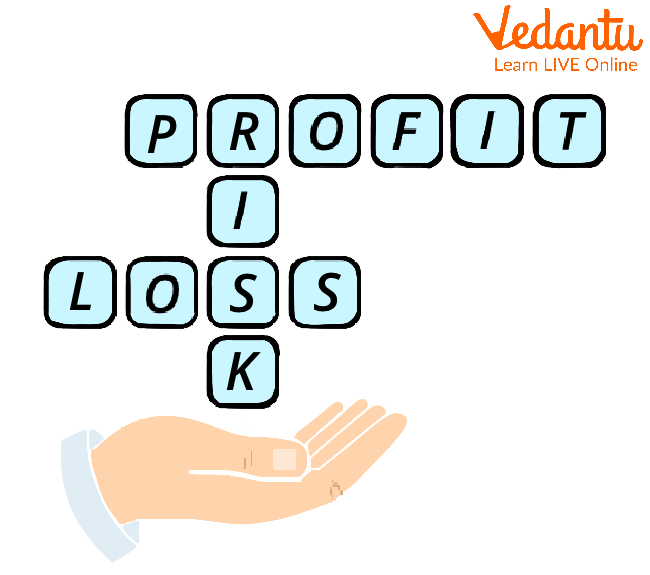




Define Insurance Claim Accounting Loss of Profit Policy
Businesses can insure stock loss from fire, flood, theft, earthquake, etc. Since insurance is indemnity, only loss can be claimed. Businesses often insure against profit loss due to lower sales, higher costs, etc. When the policy also covers losses caused by the loss of stock, it is called a loss of profit policy. The loss of profit policy is also known as Consequential Loss. Profit and Loss are calculated at the stage of summarising.

Know about the Loss of Profit
The insurance claim accounting loss of profit can be changed to cover any risks that aren't covered, as long as both parties consent and pay any extra fees. If the insurance company agrees, massive storms, floods, water leaks, impacts, broken machinery, etc. may cause damage.
If the goods are fully insured, the claim amount matches the actual loss unless they are destroyed. Underinsurance, where the stock's insurable price is higher than the sum insured, limits the claim amount to the policy amount. You can access the fire insurance claim pdf with the insurance claim formula online.
Defining Insurance Claim Accounting

Meaning of Insurance Claim in Accounting.
Each business keeps enough stock to meet the needs and size of its company so that it can run smoothly, but there is also a risk of loss by fire or other means. Most companies purchase insurance policies to protect themselves from unexpected losses. One type of policy called a "stock policy" covers stock loss due to fire.
The Standard Way that General Insurers Handle Claims
Any loss covered by an insurance policy must be reported to the insurance company as soon as possible or as soon as the insurance company allows.
When a general insurer gets this kind of message, they must respond immediately and tell the insured person precisely what steps to take.
When evaluating the loss, the contractor must follow the rules of conducting of the Authority. He must report his findings to the insurer within thirty days of being hired, and the insured can get a copy of the document if he wants to.
If the payment is late, the insurer has to pay interest at a rate of 2% higher than the bank rate at the start of the financial year during which the claim is reviewed.
Treatment of Goods Destroyed by Fire And Insurance Claims

Defining Fire Insurance & taking claims for it.
You could buy fire insurance or a separate policy as part of your property insurance. It gives money to cover the costs of replacing, repairing, or rebuilding a property damaged by fire. Because it's hard to predict how much damage will be caused by a fire, this policy has a fixed upper cap on the amount of money it will pay out. Once you file a fire insurance claim, you get the sum you lost or the most you agreed to pay.
An abnormal loss of goods is when things are lost because of fire, theft, or an accident. If these goods were covered by insurance by the firm, the insurance company could pay the claim in whole or part. The said change will have the following effect on the final accounts:
The cost of goods lost or damaged is either deducted from items purchased or listed on the credit column of the Trading Account.
The account's debit side for profits and losses must show the net deficit, which is the gross loss minus any acknowledged insurance claims.
Accepted insurance claims will be listed on the Balance Sheet's assets.
Free samples of goods are sometimes given out to try them out and get the word out. It should be handled the same way in the final accounts as in the trading account. In contrast, it appears as an advertisement on the debit column of the report for profit and loss.
Conclusion
The business must get insurance on its assets to protect against theft, mistakes, and other problems. To get insurance, they contact insurance businesses and pay a fee for the policy to be issued. In addition to the cover, the insurance policy lists the details of the things it will protect. The claim is made when there is a problem with an asset during the time covered by the insurance policy. The insurance provider promises to pay the insurer once the claim has been verified.
FAQs on Loss of Profit Policy: Meaning and Significance
1. What is the importance of fire insurance?
The business needs insurance on its holdings or assets to protect against theft, missteps, and other troubles. People contact insurance companies to get insurance and pay the cost for the policy to be approved. Along with the coverage, the insurance policy records the items it will protect. A fire insurance premium in a profit and loss account is filed if something goes wrong with an asset when the insurance policy covers it. The insurance company will pay the company once the claim has been checked out.
2. What will be the journal entry of the insurance claim received?
Whenever the business gets the insurance payout or claim from the insurance provider for a destroyed fixed asset that was insured, the entire cover of the fixed asset is usually the net book value of the investment. Also, suppose the insurance provider sends the company a claim for 100% of the fixed asset's loss value. In that case, the company can create an insurance claim received journal entry obtained by debiting the cash account and the accumulated depreciation account and crediting the fixed asset account.
3. How is carriage outward in the profit and loss account treated?
The cost of getting goods from the seller to the purchaser is "carrying outward." Since this expense is incurred after the items are ready for sale, it is written off at the end of the accounting period. It has to do with sale and carriage inward, which is the cost of transporting goods when bought. The trading account lists all the prices of making something. So, carriage outward in the profit and loss account, while carriage inward shows up in the trading account.





















